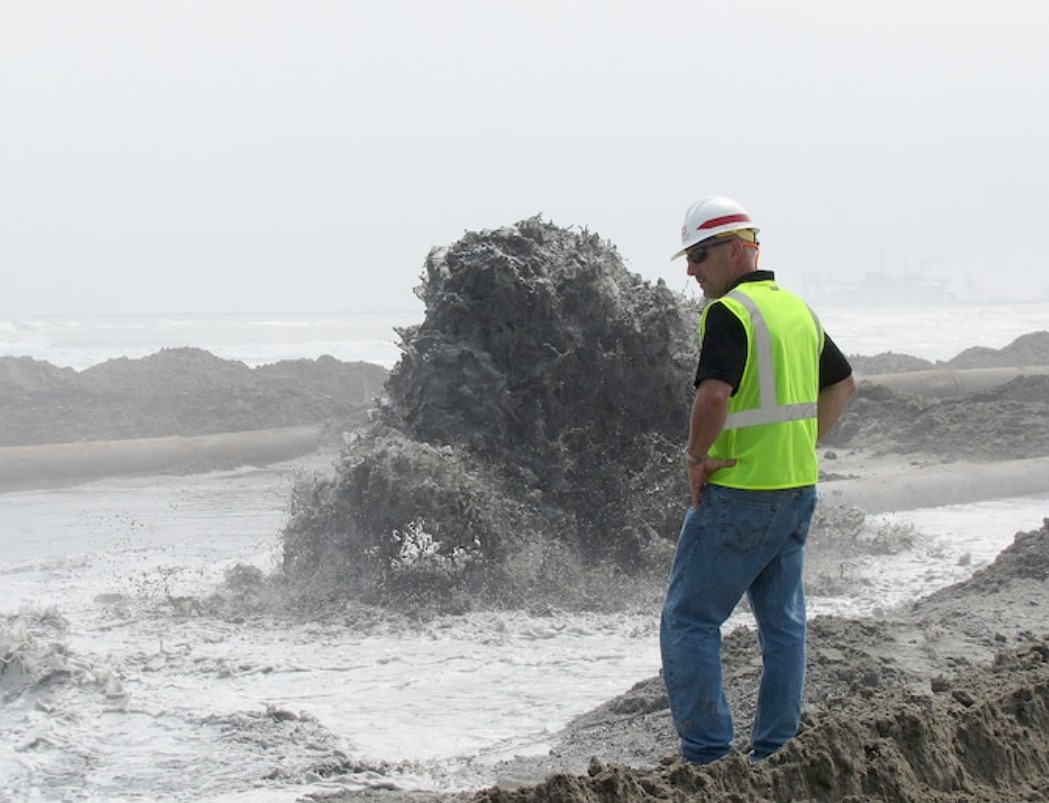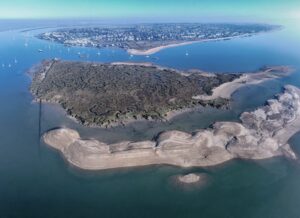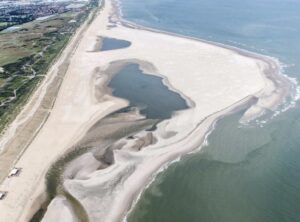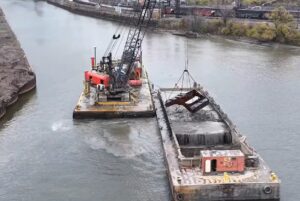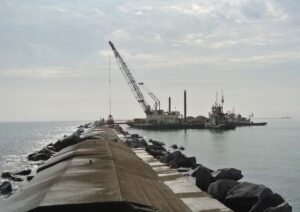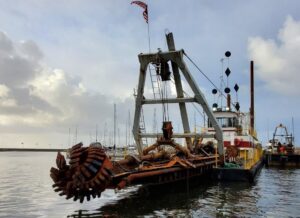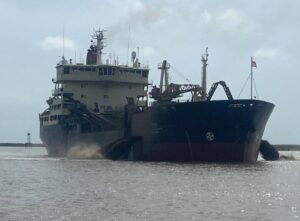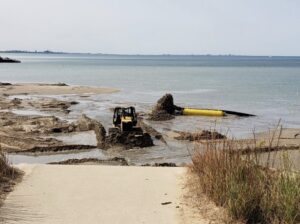USACE discovering new ways to put dredged sediment to use
Dredging is a central part of the U.S. Army Corps of Engineers’ (USACE) largest mission – to maintain clear, safe and navigable waterways.
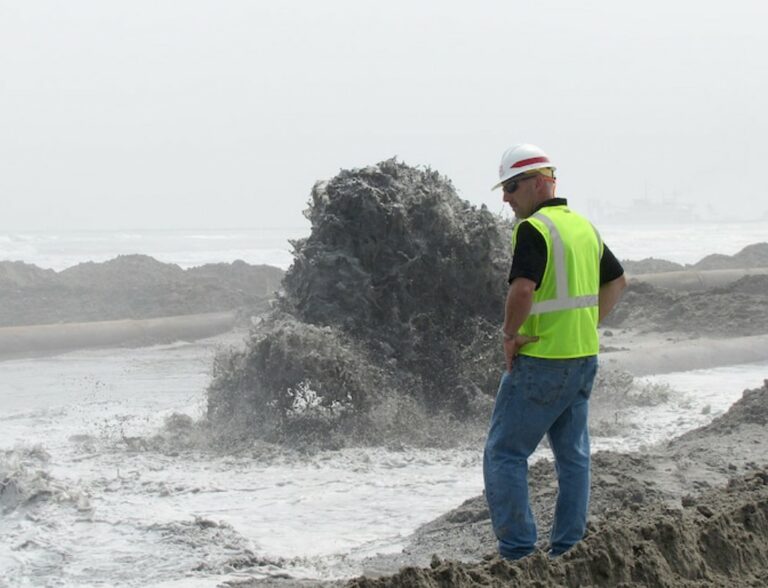
Without periodic dredging, many harbors and ports would be impassable, and so more than 400 ports and 25,000 miles of navigation channels are dredged throughout the U.S. each year.
One byproduct of these extensive dredging operations is the large amount of sediment that is collected during the process. There is a growing interest to find new ways to repurpose this material, and USACE recently set a goal to recycle 70 percent of its dredged sediment by 2030, placing it in ways that will provide benefit to the system, such as coastal storm risk reduction, recreation or habitat creation.
Currently, 30 to 40 percent of all dredged material from federal navigation channels is used beneficially for such purposes as nourishing beaches and enhancing wetland habitats.
“The previous mindset was that the material was a nuisance and something that we needed to dispose of,” said Katie Brutsché, an associate technical director for USACE Navigation Research, Development and Technology and program manager for the USACE National Regional Sediment Management (RSM) program. “In the last several decades, we’ve realized that sediment is a resource — it has a value to it — and if we can return it to the system and find ways to place the material such that it gives us some sort of benefit, that would be ideal.”
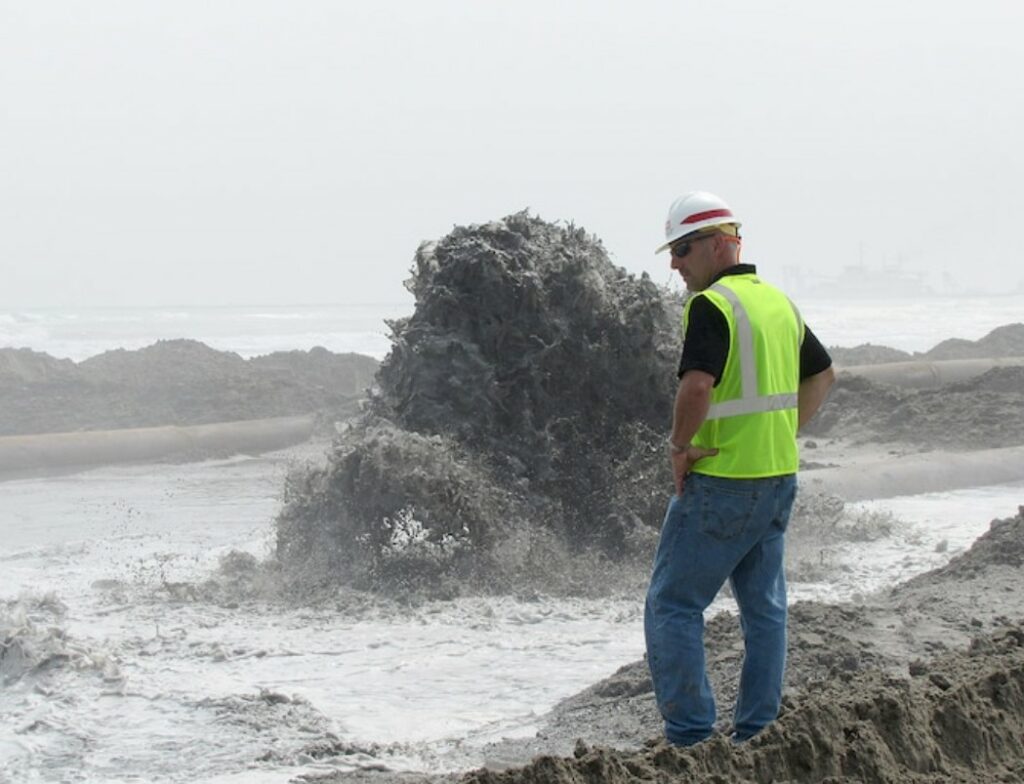
“In the coastal system, oftentimes, when we place material beneficially, we use it as beach nourishment or nearshore placement that provides storm protection to our beaches and coastlines. On the inland side, we use it for riverbank nourishment that helps reduce the amount of mass wasting along riverbanks, which benefits the local community as a whole,” added Brutsché.
A USACE Tiger Team is focused on ways to increase the beneficial use of dredged sediments. Meanwhile, workshops have been conducted and a working group is being created. The U.S. Army Engineer Research and Development Center (ERDC) even has a strategic focus area that concentrates on ways to better manage sediment, including beneficial use. Research and development programs like RSM and Engineering With Nature® investigate new techniques and uses for this material.
The USACE RSM program funds projects across the enterprise and encourages managers to look at their projects more creatively to find ways to manage sediments more efficiently and effectively, often resulting in the beneficial use of dredged material.
“Within the RSM program, we’re working to quantify the amount of beneficial use,” said Brutsché. “We’ve created the Beneficial Use Database, which helps give us a report card and tell us where we are doing beneficial use well and where we might need to improve. You can look at it at the USACE-wide level all the way down to a project-specific level.”
USACE has advanced this effort through a sustained commitment to innovation for more than 40 years across multiple research programs, and it plans to continue that trend.
“There are many examples across USACE where increasing beneficial use has proven both environmentally and economically beneficial. There are a lot of people doing a lot of really great things. Sediment is a resource, and it’s important for us to remember that. It has value, and we need to be thinking of innovative ways to reintroduce that resource back into the system once we dredge the material from our navigation channels,” concluded Brutsché.

